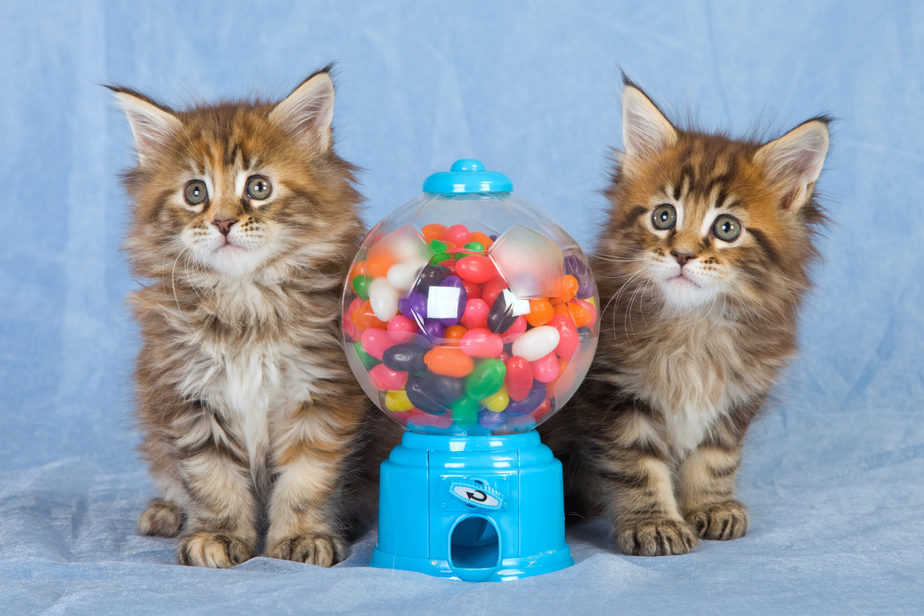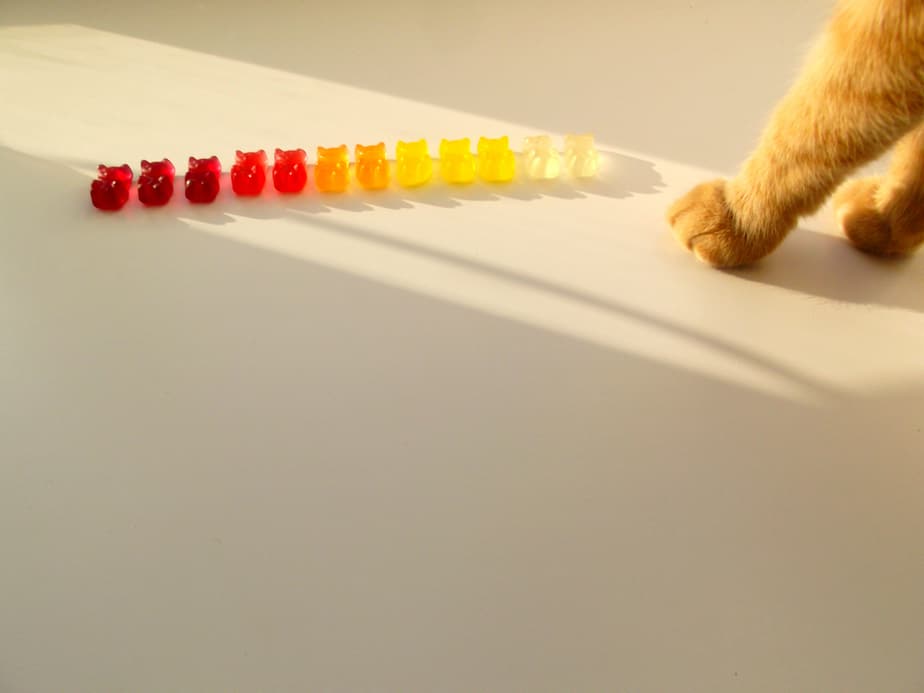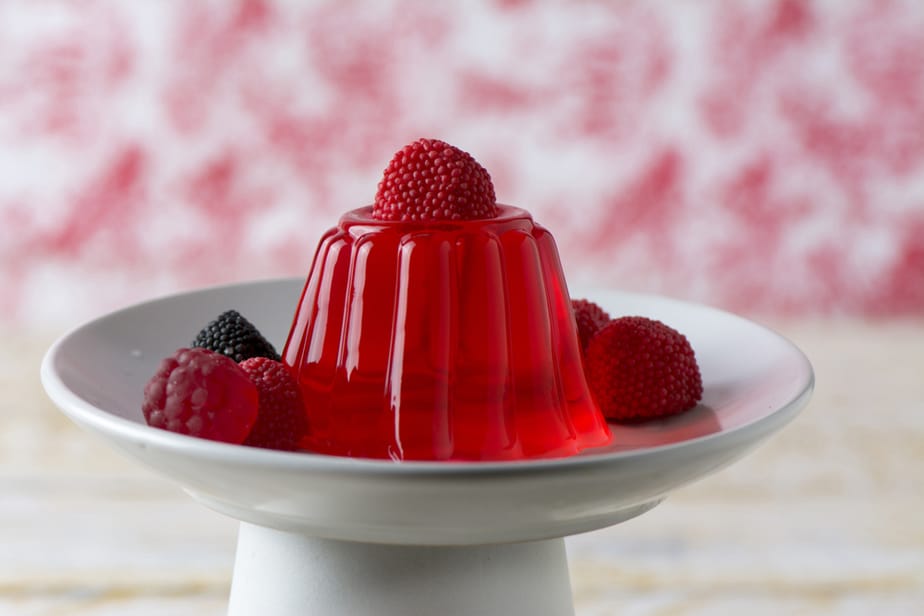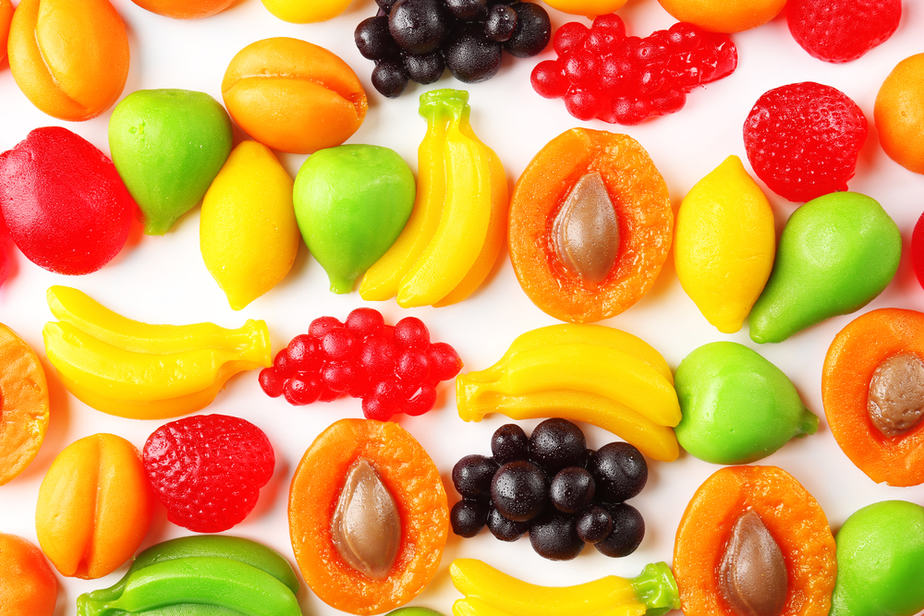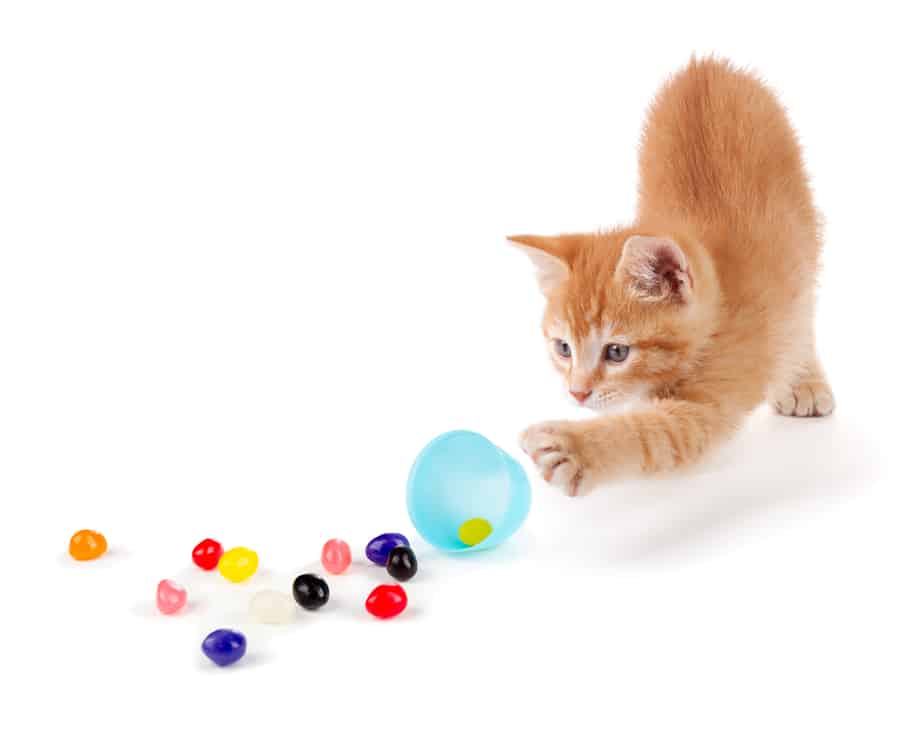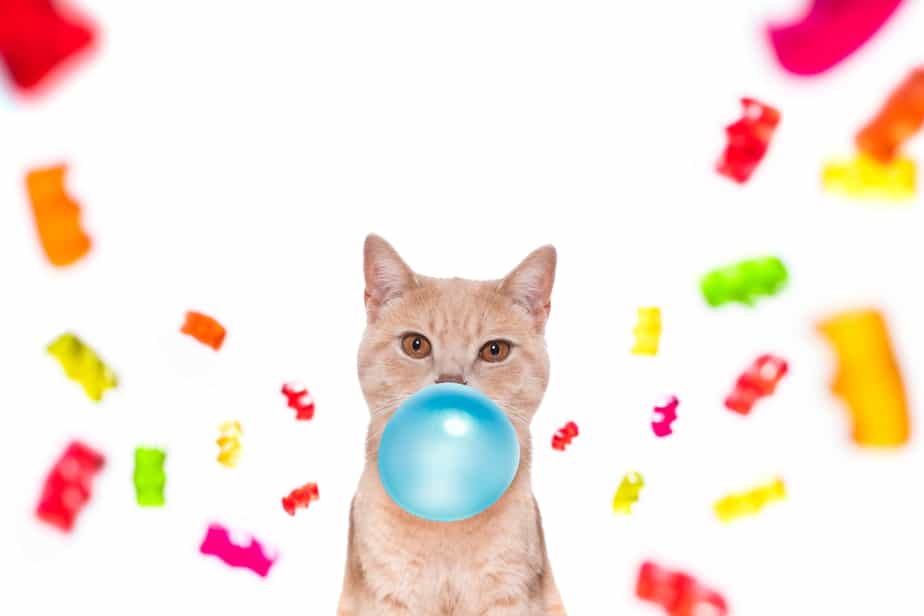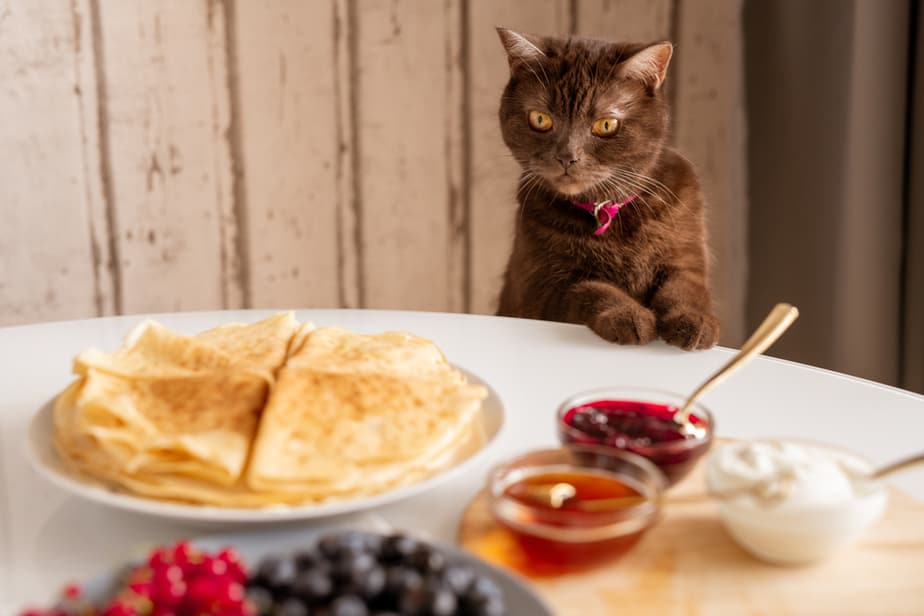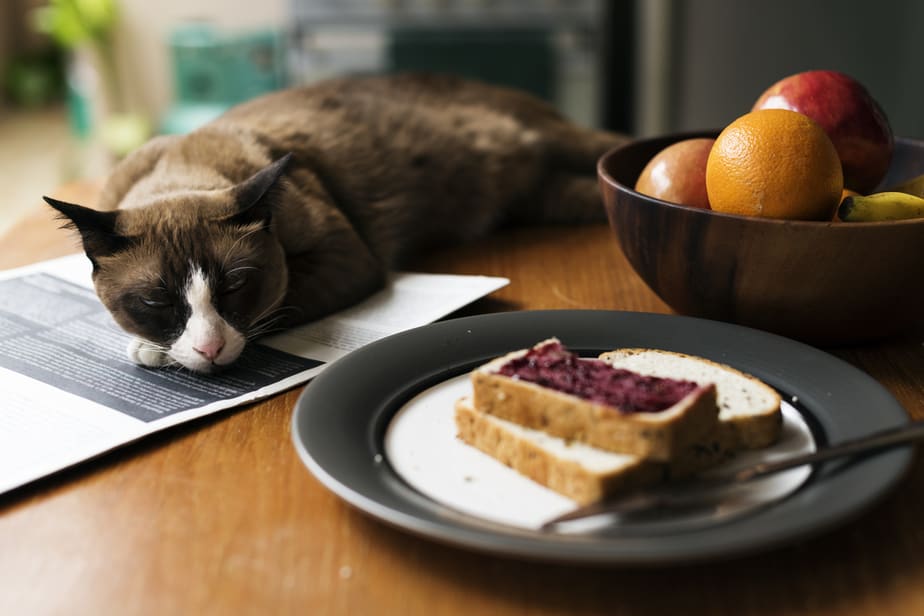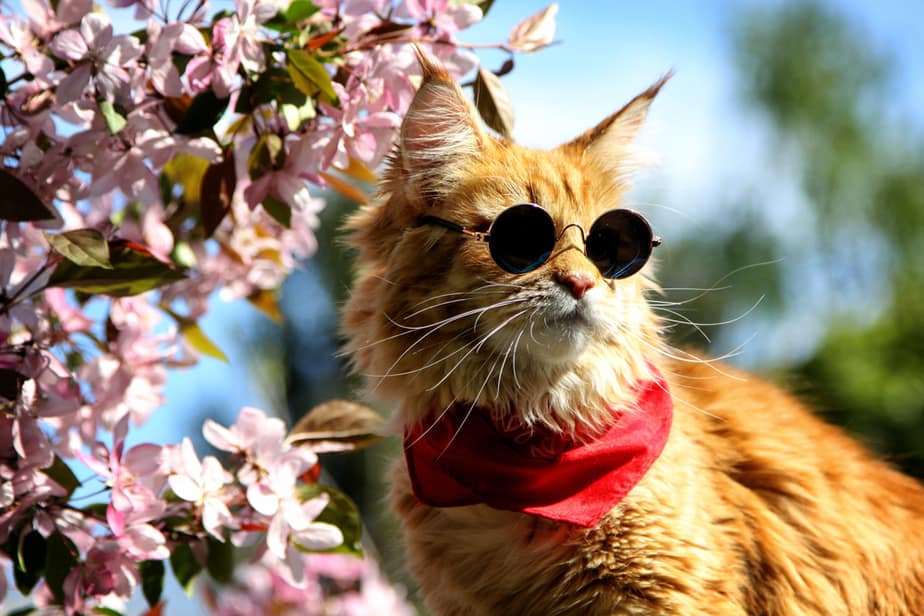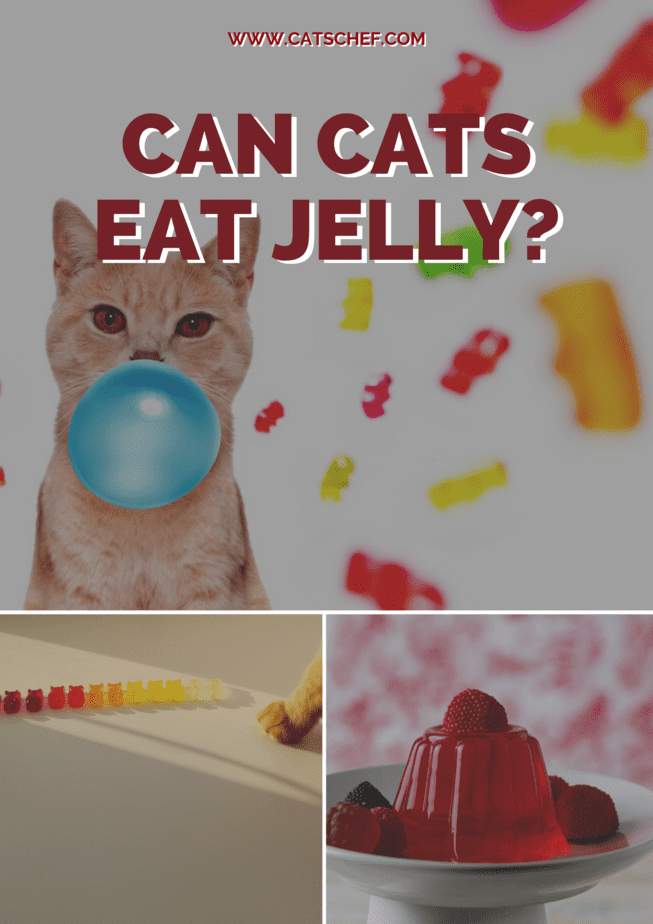📖 Table of Content:
Jelly is a fun-looking and tasty treat. The jiggly texture makes our insides wobble as well. You might find your cat interested in this bouncy dessert and be tempted to share some with her. But the question is, can cats eat jelly?
Jelly isn’t poisonous to your feline, but the amount of sugar it contains could cause some problems. After all, it depends on what type of jelly you’re referring to.
Do cats like jelly?
Cats aren’t really fond of this elastic mass. Imagine if you were born to be a predator and hunt down smaller prey for meat. Would you be interested if offered a wiggling food of suspicious consistency?
Felines don’t show enthusiasm in sweets, though. They’re clever little creatures and if they show no interest, it’s because they know something isn’t for them. This doesn’t mean all cats will act the same way, though.
Even though they’re wired to eat meat, cats can sometimes wonder about this sweet gel. The color or consistency may just spark your pet’s interest. Either way, let’s see if cats can eat jelly and what are the consequences.
What is jelly?
Jelly is a fruit preserve that is clear or translucent, and has a quivering texture. It’s made from fruits such as apples, strawberries, raspberries, and others. The process of making this sparkly treat is similar to that of jam.
The difference is in fruit pulps that are removed after the process of cooking. The result is clear and fresh jelly with a fruit flavor that’s solid enough to cut. A jelly’s characteristic transparency and jellied consistency are similar to those of the gelatin-based delicacy.
Can cats eat gelatin?
Here is some good news for your kitten. Yes, cats can eat gelatin. It’s a bland, clear food ingredient that’s derived from animal body parts. Food, beverages, medications, drug and vitamin capsules, and cosmetics all use it as a gelling agent.
Due to gelatin coming from animals, it holds a certain amount of animal protein. Cats need animal protein daily and the chances of your fluff liking gelatin are high. Therefore, gelatin is safe for your pet and could benefit her bones because of the collagen.
Can cats eat strawberry and blueberry jelly?
This sweet and firm treat is perfectly safe for your pet. Cats can eat strawberry jelly, but make sure to only offer it in moderation. Strawberries are a safe and natural sweet for your kitty.
Yet, strawberry jelly is full of sugar and other sweeteners. Regular ingestion of this food is likely to cause more harm than good to your feline. A few bites won’t hurt, but make sure this sweet pleasure isn’t left unattended.
The short answer to this question is yes. Cats can eat blueberry jelly because blueberries are highly nutritious to felines. They contain an array of antioxidants and can prevent tissue damage.
Moreover, they can also help in preventing urinary tract infections. The credit for this lies in the vitamin C found in blueberries, as well as the fiber content.
Can cats eat cherry and raspberry jelly?
Just as is the case with strawberry jelly, you shouldn’t let your pet indulge in these. Although cats can eat cherries and raspberries, letting your furry friend binge on them isn’t recommended.
In many jellies, sugar is the main problem. The sheer amount of it can’t be healthy for you, not to mention your cat.
Another compound that’s added to jelly is xylitol. Xylitol is a sweetener that can be poisonous to cats. If your cat has eaten too much jelly, play it on the safe side and consult a veterinarian.
And how about a PB&J?
We all know this combination. It’s most popular among children, but what about cats? Peanut butter is a great addition to many desserts or even spread on a slice of bread. Unfortunately, it’s too much for cats.
You probably saw your friend giving her dog some peanut butter and wondered if it’s safe for your feline. While it isn’t toxic, it’s calorie-dense and not recommended by vets.
Peanut butter is high in fat, and while cats need fat for energy, this one is better avoided. Felines get fats from their meat-based diet, and the amount of fat found in peanut butter is of no use to them.
Also, peanut butter is high in sodium, which isn’t healthy for your fluff. High salt levels can lead to sodium toxicity in cats. In addition, the thick consistency can be a choking hazard to your feline.
Furthermore, just like humans, cats can react to peanuts. Allergic reactions aren’t rare and it could make your sharing not caring. Having previously touched upon jelly and its effect in cats, this combination is likely to harm your feline.
If she’s taken a few small bites, it’s possible the only reaction will be nose scrunching. However, if any symptoms occur, make sure to call up your pet’s doctor.
Can cats eat apple jelly?
Apples are safe for your cat to consume. Without seeds, apple jelly isn’t toxic to your furkid. But do note that any jelly containing excessive amounts of sugar or additional sweeteners like xylitol could cause your cat harm.
What about banana and apricot jelly?
Banana jelly is safe in limited amounts. Due to the fact that bananas have some crucial benefits to your cat’s health, it can be a safe treat. Bananas are high in potassium, which is beneficial to the heart and kidneys.
Apricots can be tricky, though. The flesh can provide some needed nutrients, such as beta-carotene, which helps prevent cancer. On the other hand, other parts such as leaves and pits are toxic to cats.
Is grape and lime jelly safe for cats to eat?
Grapes can lead to a troublesome situation. They are highly toxic to cats and therefore, cause unwelcomed scenarios. Grapes and raisins can lead to kidney failure and other health issues.
Lime, as well as grape jelly, is off-limits too. Citrus fruits such as lemon, lime, orange, and others can be a potential threat to felines. In conclusion, cats should refrain from consuming grape and lime jelly.
Pepper and grass jelly?
Sweet peppers are safe for your feline – again, in moderation. As is the case with fresh fruits, pepper jelly isn’t harmful to your pet, but you should limit her intake.
When it comes to the common grass jelly, due to its high sugar content, it’s not getting high recommendations from the vets.
Can cats eat sugar-free jelly?
We have already established that cats shouldn’t be eating sugar. The name might be deceiving, though. Just because it’s sugar-free, it doesn’t mean it’s necessarily healthy for your pet.
Oftentimes when avoiding sugar, there will be other sweeteners that could present possible harm to your feline. so when giving jelly, don’t be gullible. Moderate your fluff’s intake.
Can cats eat jelly beans?
These sugar candies in the shape of a bean come in a variety of colors and flavors. But the sugar in these jelly beans can be dangerous for your feline.
You might be misled by their small size, but this is the case where size doesn’t matter. Even if tiny, jelly beans can cause gastrointestinal distress to your pet. To prevent this from happening, keep the bag out of their reach.
Can cats eat sour jelly?
Sour jelly is a no-no for your pet. Cats can’t eat sour jelly because of the sour sanding or sour sugar. This ingredient is made from citric or tartaric acid.
Your cat won’t like the taste, and apart from that, it can be harmful to her. The citric and tartaric acids are too much for your feline’s digestive system.
You may think offering her some sour jelly will entice her and her taste buds. However, you’re wrong on that one. Rather consider feeding her some cat-appropriate treats rather than sour jelly.
Can cats eat vegan jelly?
Vegan jelly, also known as agar-agar, is made out of red algae. This treat isn’t poisonous to your feline. However, keep in mind that cats are carnivores and won’t get much in the line of nutrients from plant-based foods.
If you’re a vegan, that’s great. But remember your cat’s natural needs.
Can cats eat jelly sweets?
Just as is the case with jelly beans, other jelly sweets are best avoided. The consumption of these, such as gummy bears, doesn’t bring any nutritional value to your feline.
In addition to having no nutritional value to your cat, jelly sweets are high in sugar and other sweeteners. Some of the sweeteners might be toxic, such as xylitol.
Rather avoid giving jelly sweets to your pet because it could eventually lead to health issues. Daily sugar intake could leave your cat with dental problems such as tooth decay.
Other health conditions could come in terms of obesity and diabetes. To prevent these misfortunate cases and diseases from developing, stay faithful to your feline’s regular diet.
What about jelly powder?
This powder mixed with hot, boiling water makes the jiggly treat we enjoy. If your cat eats some jelly powder, don’t panic. It isn’t likely she won’t get hurt from it.
Some people even put a tablespoon of jelly powder on their cat’s wet food. The gel-like consistency attracts felines. Due to the fact that gelatine is derived from the collagen of animal body parts, your pet will appreciate it.
Can cats eat jello?
This one can be tricky because of the high sugar content and other artificial compounds that serve as a sweetener. Jello is probably not a major threat to your cat.
Avoid jello puddings with chocolate or cocoa flavoring, though. Chocolate is highly toxic to your feline because of the compound called theobromine. Chocolate consumption can be lethal for your feline.
Cocoa is a no-go, too. These puddings are full of caffeine. While humans ingest it regularly, cats have a chance of caffeine poisoning.
Is marmalade safe for felines?
This is a frequently asked question in the cat lover world. Marmalades often find a place on our shelves. It’s a fruit preserve that contains citrus fruit juices and peels.
To make marmalade, the parts of fruits are boiled with water, sugar, and a combination of fruits. These often include mandarins, lemons, grapefruits, limes, and others.
However, the unfortunate event is that cats can’t eat citrus fruit. This is due to essential oil extracts like linalool, limonene, and psoralens.
These components can cause citrus poisoning in your feline if she’s been exposed to any. Clinical symptoms include vomiting, diarrhea, drooling, etc. If you notice any of these, take your cat to see the vet pronto.
In addition to citrus poisoning, another bad side of marmalades is sugar. Just like humans, cats can develop health issues such as diabetes. Symptoms to look out for involve excessive thirst and urination. This happens when the kidneys are attempting to eliminate extra glucose from the body.
Even though some fruits are safe for your cat to ingest, like strawberries and apples, marmalades aren’t the best option. Especially the store-bought ones because they contain too many preservatives.
The alternative to marmalades can be homemade ones. You can mix some fruits edible to cats and blend them up. Avoid sugar and citrus fruits and make sure no pits or seeds are left in it.
Is it okay to feed my cat jam?
While the marmalade is mostly made out of citrus fruits, jams can be made out of any fruit. The making process is similar – crushing fruits with sugar and leaving pieces of fruit inside.
The end result of making jam should be the color of the used fruit. Jam’s consistency is thick as well, but not as dense as jelly’s. Unfortunately, the same goes as for jelly and marmalade.
Too much sugar isn’t good for your furball. If you don’t want the adverse consequences, make sure to keep her taste-testing to a minimum. What would be even better is to replace human sweets with some cat treats.
Other jelly foods
Jelly is a multitasking ingredient, we can say. Its components craft a way for the jelly to be used in many ways. For example, in addition to candies and other sweets, jelly can be used for jelly shots, salads, and much more.
1. Jelly shots
We think the name speaks for itself, So, no, cats can’t drink or eat jelly shots. Jelly shots are a combination of gelatin and various types of alcohol.
Usually, it’s vodka and rum that’s used for making jelly shots. Alcohol is poisonous to cats and can be very detrimental to their health, including liver and brain damage. Needless to say, don’t let your cat even sample these.
2. Jelly salad
Jelly salad is composed of gelatin, fruits, and sometimes grated carrots. Other additions to the jelly salad are cheese, whipped cream, pretzels, marshmallows, and others.
Cheese and whipped cream are ingredients felines can’t digest. Your cat cannot digest large doses of lactose, which leads to common symptoms such as diarrhea, vomiting, and overall gastrointestinal distress.
Pretzels, although not harmful to your fluff, just aren’t the best option. They contain wheat, which isn’t toxic, but can’t benefit your kitty. Apart from wheat, pretzels come with toppings such as chocolate, which can be lethal to your feline.
Marshmallows are not a safe food for your cat either. Aside from having no nutritional value, marshmallows are a choking hazard to felines.
Read more: Can Cats Eat Popsicles? Is There An Alternative?
Final words
To conclude, cats can eat jelly, but in really small doses. If you’re adamant about having your four-legged friend eat jelly, let your pet enjoy a nibble, but keep her safe while doing so. The majority of jellies and other sweets, such as jam and marmalades, contain way too much sugar.
Too much sugar can be detrimental to your cat’s health. She can develop some serious health conditions, such as diabetes. Next to diabetes, dental problems and obesity are valid problems as well.
Additionally, artificial flavors used as sweeteners for these types of food aren’t safe for your fluff either. Most sweet foods contain xylitol, an artificial sweetener that’s toxic to cats.
Some fruits might cause problems, too. While strawberries, bananas, and others are safe and beneficial to your pet’s health, others might not be. Dangerous fruits that are often found in jelly include lime, lemons, and grapes.
Jelly can be used in many culinary treats and can be composed of certain ingredients such as grapes, raisins, and others that are dangerous to your pet.
Look up some recipes for homemade jellies, jams, and marmalades. These can be a great rare treat for your cat. Mixed fruits that are edible for felines, without sugar and other hazardous foods, will make your cat’s taste buds tingle.
Be sure to keep your furchild safe while feeding them. High amounts of any food that isn’t a natural part of their diet can be harmful in the long run.
Cats are obligate carnivores and they can have human food from time to time. However, it’s best to stick with meat and their certified cat food for the most part.
Cats get all the needed nutrients from meat and meat-based foods. Jelly can be a treat, but only as an odd nibble once in a while.
Read more: Can Cats Eat Cake? Before You Invite Her To A Party, Read This
